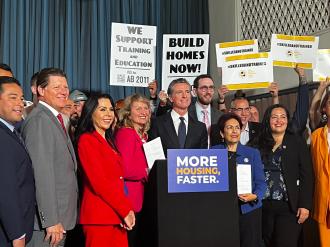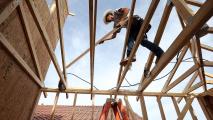A cheer rang out as the critical vote was cast.
It turned out it wasn’t close: the groundbreaking measure passed 33-0 — unheard of for a controversial initiative that had died just the year prior.
After years of skyrocketing rents and political gridlock, the unanimous, bipartisan vote was a huge victory for a coalition of housing advocates, labor unions, and people just sick of California’s housing crisis.
The bill – AB2011 – enables 1.6 to 2.4 million new homes in California’s commercial areas. That was the finding of a study by urban planner Peter Calthorpe, who described the initiative to the Gimme Shelter podcast as “the idea that we would take one of our worst places in our communities and turn it into one of the best places.”
The vision? Turning streets like this in LA:
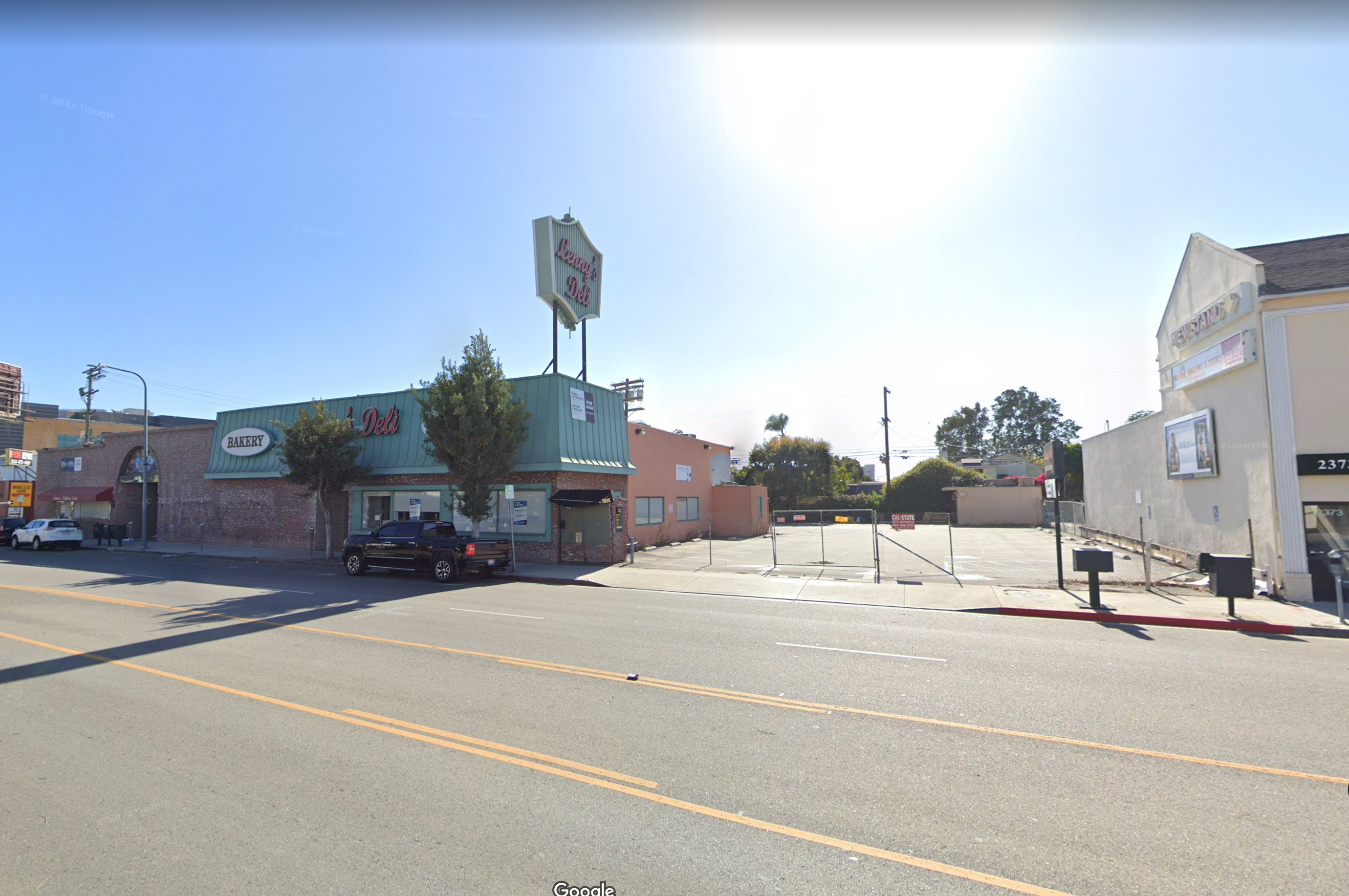
Into something like this, in Barcelona, Spain.
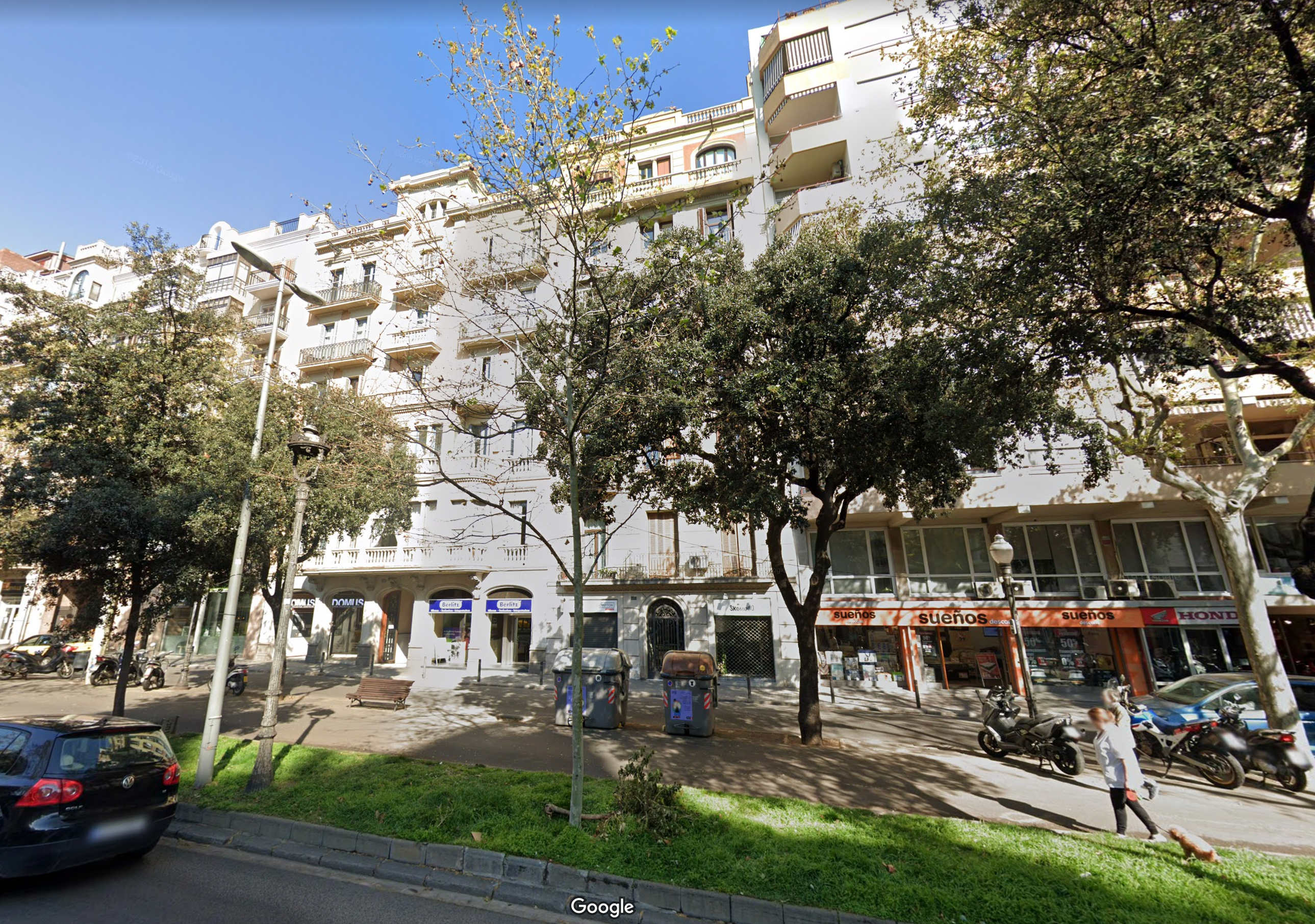
On September 28th, Governor Gavin Newsom officially signed AB2011 and 37 other housing bills. He called the lack of housing availability California’s “original sin” and urged the state and cities to hold themselves accountable for allowing more housing.
“We would take one of our worst places in our communities and turn it into one of the best places.”
-PETER CALTHORPE, urban planner
Here’s the plan.
The changes, visualized
Walking down a street, you might think the way buildings look is random or natural. However, it’s often dictated by extremely specific laws that box in what can be built.
Let’s look at that street in LA, with just a few of the restrictions illustrated.
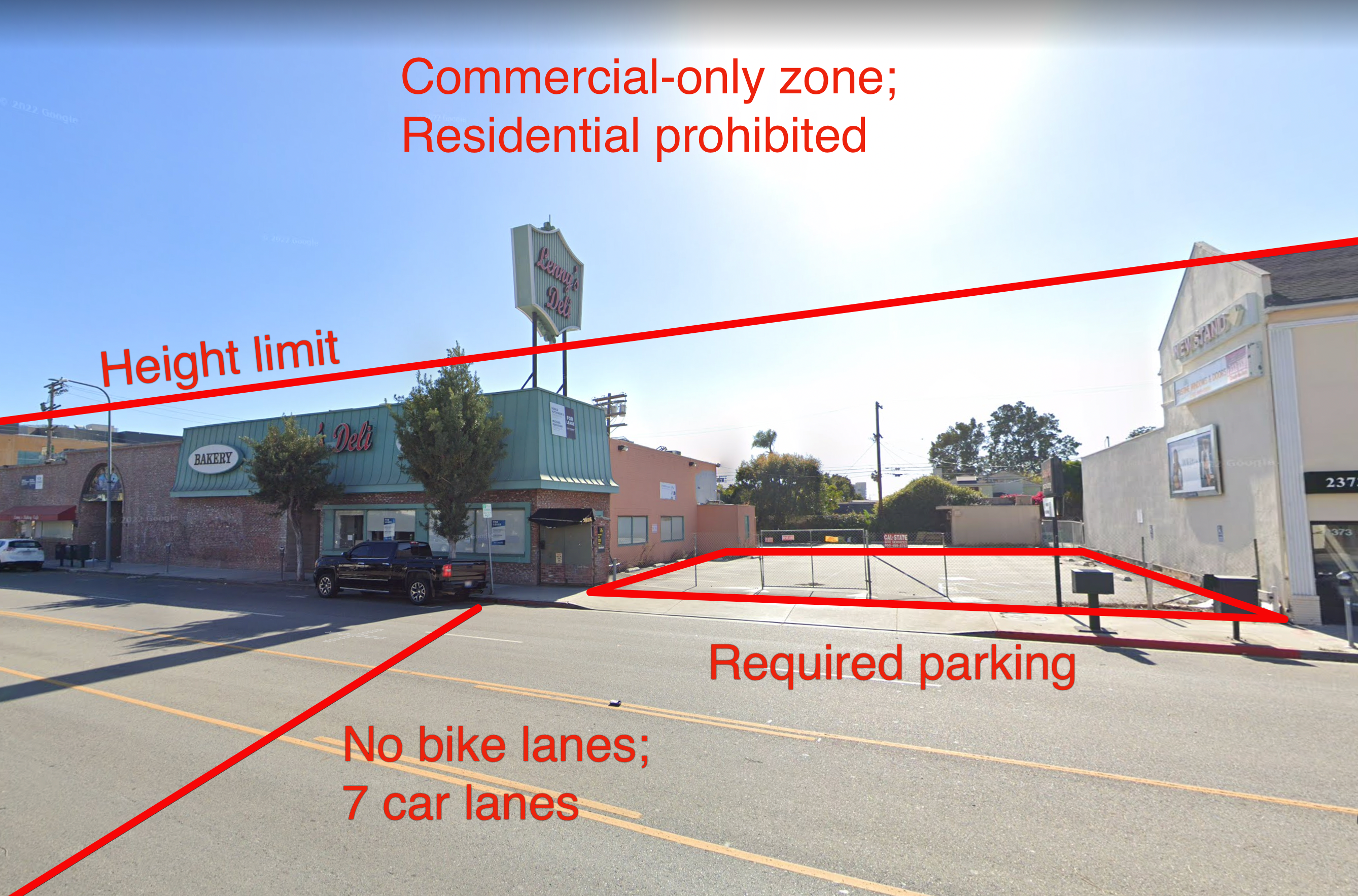
If you owned that restaurant, it’d be illegal to add apartments above it, build a significantly bigger building, or build anything else at all in the parking lot.
On the street, a lot of space is devoted to driving lanes and parking. This is in part due to a vicious cycle: since few people are allowed to live nearby, they have to drive. The more people drive, the more space is needed for roads and parking – making it less walkable and more necessary to drive.
Compare it to that street in Barcelona:
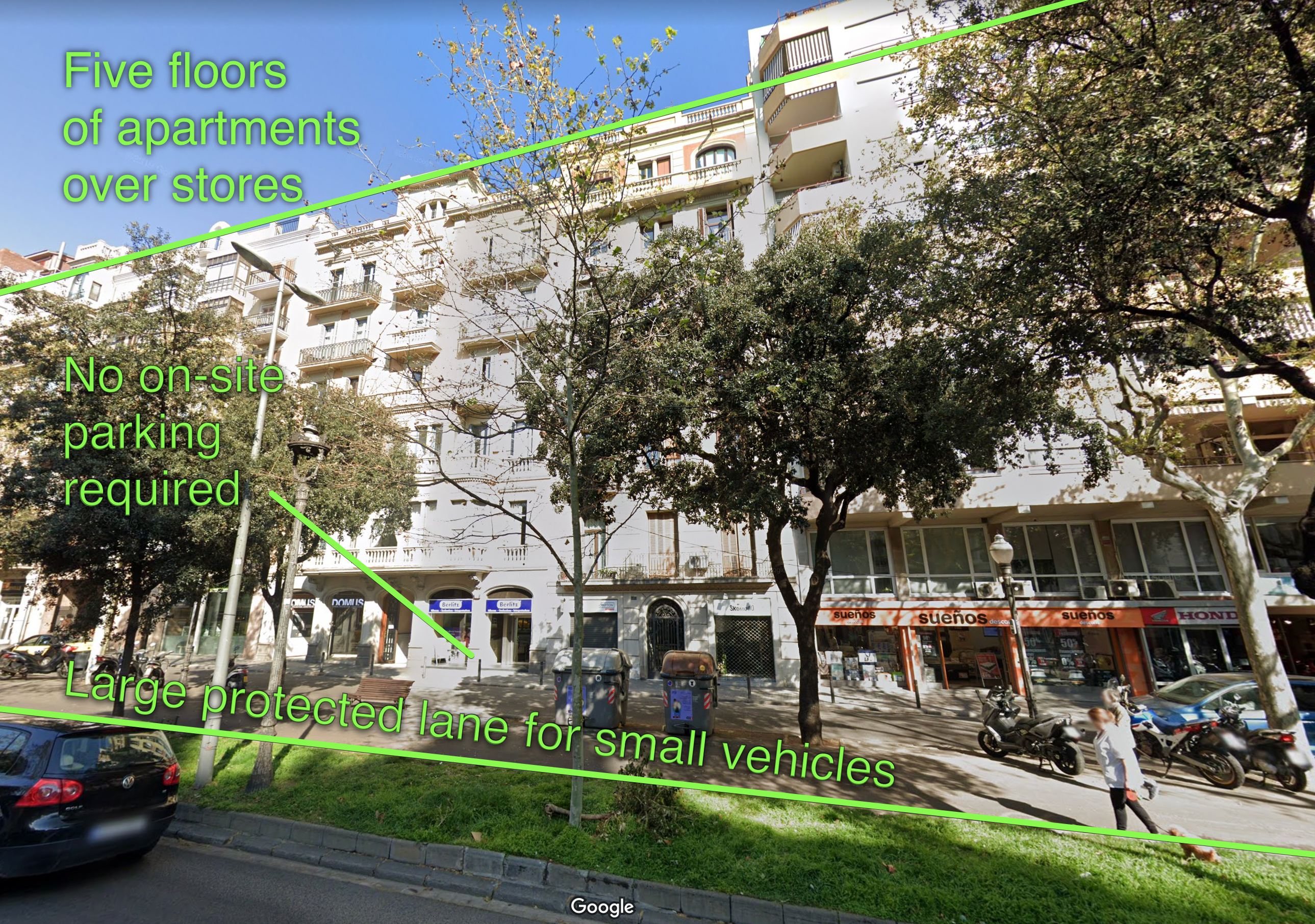
Here, several floors of apartments are allowed above the shops, which do not need parking to stay in business. Many customers live within walking distance, and more people bike since things you want are closer by. This creates a virtuous cycle: Since more people bike, you can devote more space to bikes, which makes them safer to use and encourages still more people to use them.
But the most surprising element may be the cost.
A 600-square-foot, 1-bedroom apartment on that street in LA rents for $2,800/month — that’s more than half of the median household income in the city.
This isn’t an inherent big city problem. LA was recently ranked the least affordable city in the country to rent in, with average rents up five times higher than those of other American cities. Moreover, 4 of the nation’s 5 least affordable cities were in California. Worldwide – while comparisons are trickier – premier international cities like Berlin and Tokyo have rents less than half of those in LA.
The root cause is that California has spent decades passing laws making it harder and more expensive to build housing, often with the explicit goals of raising the price of homes and devoting more land to cars.
While its economy grew to be the fifth largest in the world, California ended up with effectively the least housing per person of all 50 states, despite huge demand to live there. This has created sky-high rents, endemic homelessness, suburban sprawl into wildfire zones, air pollution from long commutes, and shortages of essential workers.
But it’s not just a California problem. Housing shortages and spiking prices have now spread to more and more American cities – think Appleton, Wisconsin – and exposed generations of similarly flawed laws.
People nationwide will be watching closely to see if California’s new legislation succeeds.
The legislative details
Here are the most impactful changes in the new reforms:
1. Legalize apartments in commercial zones.
AB2011 and SB6 will legalize 3-6 stories of apartments in commercial areas. Even more could be built with existing size bonuses for including subsidized low-income housing near transit.
2. End parking mandates.
Most apartments in America are required to come with parking spots – often more than one per bedroom. Each adds an estimated 16% to your rent. Many people can’t or don’t want to drive, or would simply prefer to save money.
Each additional parking spot adds an estimated 16% to your rent.
AB2097 eliminates mandatory parking in areas with frequent transit, enabling the cheaper apartments you see in other countries — perhaps someday even Tokyo’s micro-apartments starting at around $350/month — while helping reduce traffic and air pollution.
3. Fast, certain, and simple housing permits.
In San Francisco, it takes an average of 3 years between applying for permits and actually being able to build – if projects aren’t killed along the way by one of the city’s notoriously fickle review processes.
Since time is money — and time spent paying specialized lawyers and consultants is a lot of money — this has increasingly meant only large corporations pursuing expensive projects with a large potential payoff are able to build apartments.
Many other jurisdictions simply have the government set transparent rules and approve projects that meet them – a “by right” process. AB2011 adopts this rule for housing in commercial zones, while other bills like AB2234 help limit permit delays across the board. The hope is that this will speed the construction of housing, enable the development of less expensive apartment projects, and allow a wider range of homebuilders to produce them.
4. Ending environmental reviews for bike and bus lanes.
To add housing without expanding infrastructure for cars, it’s essential to enable more efficient transportation. Californians often vote for better transit — even raising their own taxes for it.
However, building it has encountered a surprising obstacle: environmental laws that let even anonymous people delay construction for years or kill it entirely. Bill SB922 exempts bike and bus lanes from these environmental reviews to help it be quickly added alongside new housing.
5. Tackling a variety of smaller obstacles to new housing.
Meanwhile, dozens of other bills address smaller niches: enabling colleges to more easily build student housing, allowing larger backyard homes (called “accessory dwelling units” or ADUs), ending restrictions on public housing, etc. – a testament to the many barriers to building housing across the state.
Will the changes be fair?
The bills also have notable provisions intended to increase benefits for workers and existing businesses.
1. Requirements to pay union-level wages.
The California Carpenters Union and Service Employees International Union were key backers of AB2011, while the State Building and Construction Trades Council sponsored the closely related SB6. These bills unlock dense development in commercial zones in exchange for union-level wages and including subsidized housing (AB2011) or hiring graduates from apprenticeship programs (SB6).
Part of this is about creating more construction jobs, and part is that California’s soaring cost of housing has been squeezing members of other unions and the working class.
2. Requirements to set aside a portion of the housing as low-income subsidized housing.
AB2011 requires any project built under it to have 15% subsidized housing for people with low incomes. California has a particularly acute need for subsidized housing (or “Affordable Housing”). The hope is that building lots of housing while requiring a fraction be subsidized will provide immediate relief for some people most in need while lowering the cost of housing for everyone overall. Lower housing costs also mean fewer people need subsidies, and they’re less expensive to provide.
3. Requirements to pay businesses who have to relocate.
AB2011 requires purchasers of existing buildings to compensate businesses in them who have to move for development. The payouts are in proportion to how long they have stayed there to defray the cost of moving and help businesses stay in the neighborhood.
4. Requirements for subsidized housing contractors to report workforce demographics.
To monitor if communities in need of new housing are getting a fair shot at the jobs building it, AB2873 requires housing projects which receive public funding to track and disclose the demographics of their workforce.
A risk of some of these measures — for instance, requiring higher wages — is that they could drive up the cost of construction, thus resulting in higher rents or fewer units being built. Housing generally only gets built when it makes financial sense: when the revenue generated by the new building is more than the cost of a loan to buy the land and finance construction.
Will they work?
Only time can tell if bills succeed in creating housing. Some much-hyped bills don’t have the effect anticipated, while others pass under the radar but end up being vital.
In the short term, rising interest rates (which increase the cost to borrow money), higher materials costs, and labor shortages have resulted in bleak forecasts for construction nationwide. Additionally, commercial land in California can often be used profitably as-is and is expensive to buy.
On the other hand, there are factors that encourage building. Housing prices are near record highs. Fast, reliable permitting will slash soft costs. Vacancies in older offices are at high levels, and opening vast amounts of land to housing could make it cheaper and easier to find sites for it. New construction technologies may lower the time and cost of construction. Declining rates of house-building in other parts of the country could free up labor to build in California.
The widespread impacts of the housing shortage have also led many unconventional players to build or buy housing. Governments have been procuring buildings for people at risk of homelessness. Companies like Google have been building housing for employees and their local communities. Nonprofit developers who build subsidized housing could benefit from having many more potential sites to choose from.
Mott Smith, an adjunct professor at USC who has analyzed AB2097, was excited about the increased flexibility allowing smaller developers to be able to build on unconventional lots and add more units to existing projects, which would otherwise be prohibited by parking requirements.
On the other hand, he was more reserved about the impact of AB2011’s commercial-area reforms, suggesting the range of areas where it made financial sense to use the carveout was likely narrower than housing advocates would like.
One large LA developer told me that using AB2011 would make more sense in the areas that currently have very high rents (like, incidentally, West LA). One upside, though, is that these are also the places most in need of new housing, because they tend to be closest to job centers.
There’s been a lot of appetite to use the bill to turn vacant commercial space in dying suburban malls into housing, but it’s not yet clear whether that will be cost effective.
With so many variables in play, it’s very difficult to predict exactly how things will pencil out economically. But no matter what, it’s a sure bet that its YIMBY (“Yes In My Backyard”) housing advocates will watch closely and continue pushing until things improve.
What’s next?
As housing shortages grow worldwide, countries from Australia to Ireland are experimenting with new approaches and learning from each other.
Vienna’s use of Social Housing–apartments available to everyone that charge rents proportional to your income–has inspired similar initiatives from Hawaii to Maryland.
High-profile California bills to legalize taller buildings near transit stops and small “missing middle” apartments in residential neighborhoods failed to pass in earlier years — but were adapted to great effect in New Zealand.
Legalizing boarding houses and other inexpensive housing types has added new low-cost housing options in Portland and Seattle.
Amsterdam and Paris’s successful transformations from being choked with traffic to “15 minute cities” where most needs can be met in 15 minutes by bike have inspired cities around the world.
California’s package this year is a bold experiment. Whether it will open the floodgates or not, it will provide valuable insight that could change the shape of California and cities everywhere — sooner or later.
